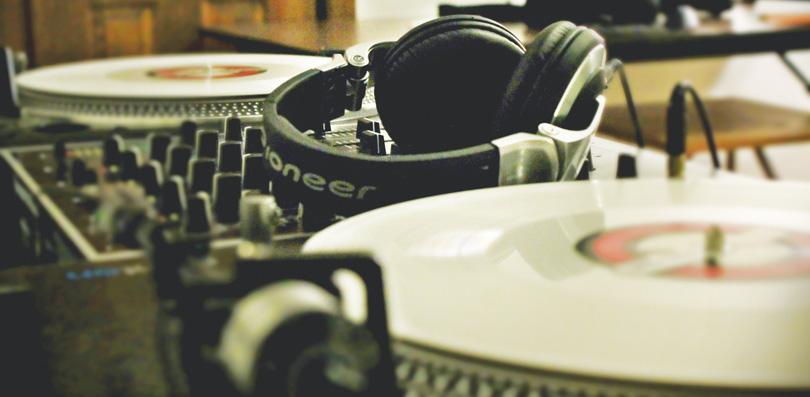When he was in eighth grade, DJ and sophomore Mark Matsuki bought himself a pair of Beats Studios, over-ear headphones currently priced at $299.99 at Best Buy.
“I remember going into the store and just opening them right up in the car because I just couldn’t wait to use them,” Matsuki said. “I wore them everywhere: to school, to (sporting events), in the car, everywhere. I thought they were the coolest things ever.”

Although purchasing headphones that cost over $100 is still a bizarre idea to many, the sales of these premium headphones more than doubled in 2011 and increased by 73 percent in 2012, according to market research done by NPD Group published in August 2012. And though there is an abundance of companies that market high-end headphones, Beats by Dr. Dre, which dominated 63 percent of the high-end headphone market in 2012, has been by far the largest contributor to these trends. However, while Beats by Dr. Dre has played a large role in popularizing high-quality sound, Matsuki said that aesthetics, rather than sound quality, have been the driving factor in the success of this company.
“They’re pretty cool-looking headphones, and if you have a pair of Beats, you have the same headphones as everyone else, that all these famous artists and producers and whatnot have,” Matsuki said.
The NPD Group survey published in November 2012 supports Matsuki’s claims. When a group of premium headphone purchasers was asked to choose the two most important attributes of their headphones, 84 percent selected brand as one of the features whereas only 76 percent chose sound quality.
However, although Steve Guttenberg, freelance writer for CNET and other audio technology websites, said he agreed with Matsuki on the significance of aesthetics on the company’s success, he pointed out that the sound signature of Beats was still important.
“I think it was a combination of the sound and the way it looked that, well, basically scored a bullseye where no other headphone on the market at that point did,” Guttenberg said. “Most people wouldn’t dream of spending $300 on headphones. But there was something about the Beats’ sound, the way they were built and the way they looked that made that number — that $300 number — seem not so crazy.”
Even so, Guttenberg said that the lack of clarity on a pair of Beats headphones didn’t fit his taste and set them apart from the typical audiophile’s headphones.
Sharif Ibrahim, owner of a pair of Beats Mixr headphones and junior, illustrated this concept when he pointed out that the sound for certain genres of music became muddled on his Beats.
“If you’re listening to a jazz piece — I know one album I use for music testing is Dave Brubeck’s ‘Time Out’ — you can hear the sounds of the saxophone, the sound the reed makes, the sound of the air coming out of the saxophone,” Ibrahim said. “Dave Brubeck, you can hear him grunting and you can hear the bass player’s strings slapping. On a pair of high quality speakers, you can hear all of these things. But on a pair of Beats, it’s a little bit muffled because they’re designed for a completely different type of music.”

Matsuki, who said he gave up on Beats Studios after they broke three or four times, is now using a pair of Pioneer HDJ-2000 headphones that he said are built exactly for the DJ setup that he uses. However, both Matsuki and Guttenberg still accredit Beats with popularizing the concept of high-quality sound.
“I would agree that Beats have greatly contributed to our society’s newfound love of music,” Matsuki said. “I think that because Beats became such a well-known standard for quality sound, people began to experience music in a different way.
It was no longer just ‘Do I have my music with me?’ It became ‘Do I have my music with me and does it sound as good as it should?’”
Guttenberg said because people are becoming accustomed to spending a greater amount of money on headphones, future generations may be willing to go try out other headphones that are based more on sound quality.
“Once that price barrier is broken, well, as those people age and they listen to different kinds of music, their tastes may evolve beyond the Beats’ sound, and (they) may be interested in, let’s say, for a lack of a better word, more audiophile or more accurate-sounding headphones,” Guttenberg said. “And again, they wouldn’t have got there if it wasn’t for Beats basically attracting them in the first place.”
Though Ibrahim said the popularity of Beats may eventually recess, Matsuki said he believes the current increase of premium headphone marketing is more than a phase.
“We’ve come a long way — from records on vinyl, to cassette players, to the Walkman CD players, MP3 players — and we now live in a world where if you have an iPhone or a smartphone, you can access any song you could ever possibly think of,” Matsuki said. “Music is so available that the market of headphones is only going to grow. People will become more immersed in their music; people will want to experience more of their music than they used to be able to. I don’t think we’re seeing just a phase: I think we’re seeing a new direction in how music and how people experience their music is going to develop.”


































![British royalty are American celebrities [opinion]](https://hilite.org/wp-content/uploads/2024/03/Screenshot-2024-03-24-1.44.57-PM.png)



















![Chelsea Meng on her instagram-run bracelet shop [Biz Buzz]](https://hilite.org/wp-content/uploads/2024/04/IMG_2446-1200x838.jpg)
![Review: Quiet on Set: The Dark Side of Kids TV is the long awaited exposé of pedophilia within the children’s entertainment industry [MUSE]](https://hilite.org/wp-content/uploads/2024/04/unnamed.jpg)
![Review: “The Iron Claw” cannot get enough praise [MUSE]](https://hilite.org/wp-content/uploads/2024/04/unnamed.png)
![Review: “The Bear” sets an unbelievably high bar for future comedy shows [MUSE]](https://hilite.org/wp-content/uploads/2024/03/unnamed.png)
![Review: “Mysterious Lotus Casebook” is an amazing historical Chinese drama [MUSE]](https://hilite.org/wp-content/uploads/2024/03/0.webp)
![Review in Print: Maripaz Villar brings a delightfully unique style to the world of WEBTOON [MUSE]](https://hilite.org/wp-content/uploads/2023/12/maripazcover-1200x960.jpg)
![Review: “The Sword of Kaigen” is a masterpiece [MUSE]](https://hilite.org/wp-content/uploads/2023/11/Screenshot-2023-11-26-201051.png)
![Review: Gateron Oil Kings, great linear switches, okay price [MUSE]](https://hilite.org/wp-content/uploads/2023/11/Screenshot-2023-11-26-200553.png)
![Review: “A Haunting in Venice” is a significant improvement from other Agatha Christie adaptations [MUSE]](https://hilite.org/wp-content/uploads/2023/11/e7ee2938a6d422669771bce6d8088521.jpg)
![Review: A Thanksgiving story from elementary school, still just as interesting [MUSE]](https://hilite.org/wp-content/uploads/2023/11/Screenshot-2023-11-26-195514-987x1200.png)
![Review: When I Fly Towards You, cute, uplifting youth drama [MUSE]](https://hilite.org/wp-content/uploads/2023/09/When-I-Fly-Towards-You-Chinese-drama.png)
![Postcards from Muse: Hawaii Travel Diary [MUSE]](https://hilite.org/wp-content/uploads/2023/09/My-project-1-1200x1200.jpg)
![Review: Ladybug & Cat Noir: The Movie, departure from original show [MUSE]](https://hilite.org/wp-content/uploads/2023/09/Ladybug__Cat_Noir_-_The_Movie_poster.jpg)
![Review in Print: Hidden Love is the cute, uplifting drama everyone needs [MUSE]](https://hilite.org/wp-content/uploads/2023/09/hiddenlovecover-e1693597208225-1030x1200.png)
![Review in Print: Heartstopper is the heartwarming queer romance we all need [MUSE]](https://hilite.org/wp-content/uploads/2023/08/museheartstoppercover-1200x654.png)






















![Review: Ladybug & Cat Noir: The Movie, departure from original show [MUSE]](https://hilite.org/wp-content/uploads/2023/09/Ladybug__Cat_Noir_-_The_Movie_poster-221x300.jpg)

![Review: Next in Fashion season two survives changes, becomes a valuable pop culture artifact [MUSE]](https://hilite.org/wp-content/uploads/2023/03/Screen-Shot-2023-03-09-at-11.05.05-AM-300x214.png)
![Review: Is The Stormlight Archive worth it? [MUSE]](https://hilite.org/wp-content/uploads/2023/10/unnamed-1-184x300.png)




